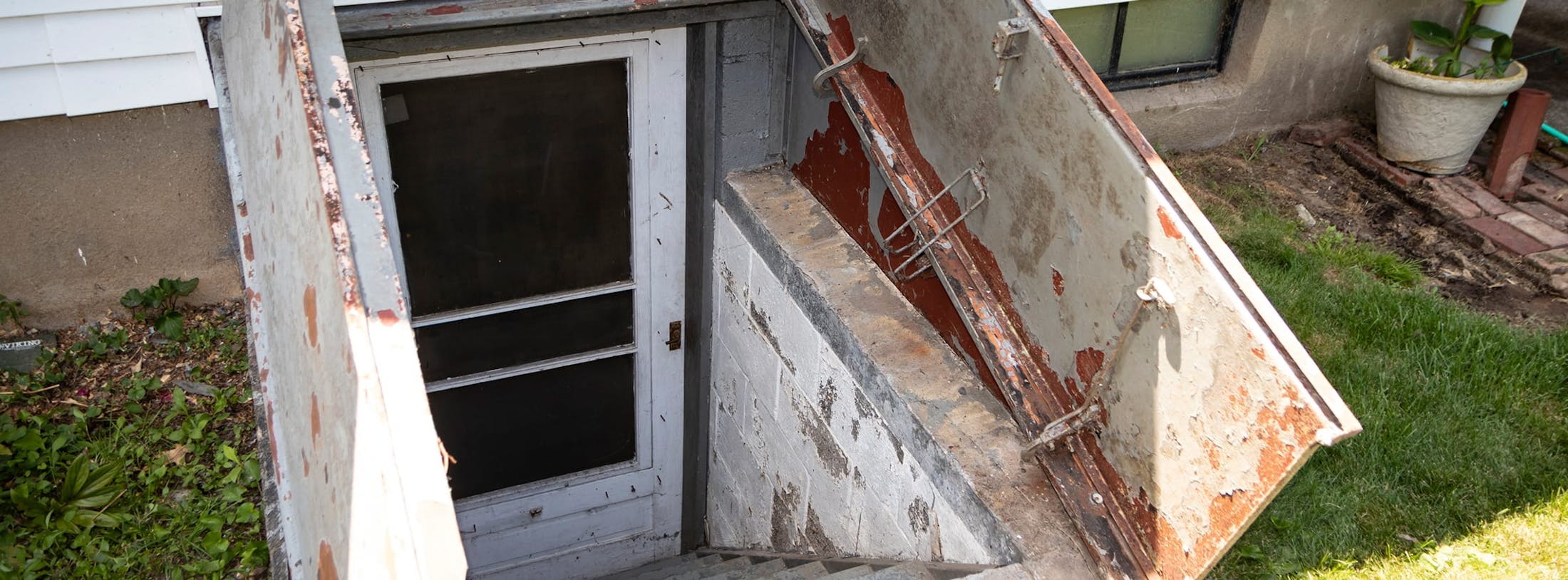Clients call Michael Lamonsoff “The Bull” because he fights relentlessly for their victory. We are consistently rated as one of the top personal injury law firms in New York City.
Faulty Cellar Door Grate Accidents

Sidewalk Safety in New York City
In bustling New York City, where pedestrians rely on sidewalks to traverse the urban landscape, safety is often taken for granted. Based on this, the reality is that negligent sidewalk maintenance and the presence of hazardous open cellar doors can lead to severe injuries for unsuspecting pedestrians.
If you have been a victim of a sidewalk accident in NYC, you have legal options. Entrust your case to the skilled legal team of faulty cellar door accident lawyers in New York City at The Law Offices of Michael S. Lamonsoff, who will diligently advocate for your rights and pursue the compensation you rightfully deserve.
What Makes a Cellar Door Defective and/or Dangerous?
A cellar door can be considered defective or dangerous due to various factors. Here are some common reasons:
Structural issues
If the construction or materials used in the cellar door are inadequate or compromised, it can pose a safety risk. Weak or deteriorating structural components may lead to a total or partial collapse or accidents when people walk or stand on the door.
Faulty hinges or latches
A defective cellar door may have faulty hinges or latches that can result in improper functioning or security problems. Hinges that are loose, rusted, or prone to breaking can make the door unstable and hazardous. Similarly, a latch that doesn't secure properly can lead to accidental openings or instability.
Inadequate support or bracing
Cellar doors should have sufficient support and bracing to withstand the weight of individuals and objects. If these components are lacking or poorly designed, it can lead to structural failure, collapses, or accidents.
Poor sealing or insulation
A defective cellar door may have improper sealing or insulation, which can allow water, pests, or drafts to enter the cellar. This can cause damage to stored items, create moisture-related issues, or compromise the stability of the door.
Slippery or uneven surfaces
Defective cellar doors may have slippery or uneven surfaces, such as worn-out or damaged steps, that can increase the risk of trips, slips, and falls.
Lack of safety features
Cellar doors should be equipped with appropriate safety features, such as handrails, non-slip surfaces, or warning signs, depending on the specific design and use. The absence of these safety measures can make the cellar door more dangerous.

The Liability in Cellar Door Injury Cases
In New York, if someone is injured due to a defective or dangerous cellar door, several parties may potentially be held liable:
- Property owner: The owner of the property where the cellar door is located could be held responsible for injuries if they were aware of the dangerous condition or should have been aware of it through reasonable inspection and maintenance.
- Property occupier/tenant: If the property is rented or leased, the occupier or tenant may also bear some responsibility for the maintenance and safety of the premises, including the cellar door.
- Maintenance or repair contractors: If a third-party contractor was responsible for installing, repairing, or maintaining the cellar door and their negligence or improper work contributed to the defect, they may be held liable.
- Manufacturers or suppliers: In some cases, if the defect in the cellar door was due to a manufacturing or design defect, the manufacturer or supplier of the door may be held responsible under product liability laws.


Types of Injuries in Cellar Door Accidents in NYC
Here are some common types of injuries that can occur in cellar door injury cases in New York:
- Slip and fall injuries: Slippery or uneven surfaces on or around the cellar door can lead to slip and fall accidents, resulting in injuries such as sprains, strains, fractures, or head injuries.
- Cuts and lacerations: Defective or sharp edges on the cellar door, hinges, or surrounding areas can cause cuts or lacerations if they come into contact with a person.
- Crushing injuries: If a cellar door collapses, malfunctions, or falls unexpectedly, it can lead to crushing injuries, which can range from minor bruising to severe fractures or internal organ damage.
- Back and spinal injuries: Falling through a cellar door or tripping on a defective door can result in injuries to the back or spinal cord, which may include herniated discs, spinal fractures, or even paralysis.
- Head and traumatic brain injuries (TBI): In accidents where a person falls or strikes their head against the cellar door or surrounding objects, traumatic brain injuries can occur.
Importance of Hiring a Qualified Injury Lawyer
Cellar door injury cases can be complex. Hiring a skilled injury lawyer for a cellar door injury case can be highly beneficial for several reasons:
- Legal knowledge: A qualified injury lawyer will have a deep understanding of the legal framework, regulations, and precedents relevant to cellar door injury cases to provide you knowledgeable guidance
- Case evaluation: An experienced injury lawyer can evaluate the specific details of your cellar door injury case and determine the viability of pursuing a legal claim.
- Gathering evidence: A cellar door injury lawyer will know how to collect relevant evidence, such as photographs, witness statements, expert opinions, or maintenance records, to build a strong case on your behalf
- Maximizing compensation: A skilled New York injury lawyer will assess the full extent of your damages and negotiate with insurance companies and defendants to seek the largest possible settlement on your behalf, or will prepare a strong case for trial if necessary
- Legal representation and advocacy: Throughout the legal process, an injury lawyer will provide you with strong representation and act as your advocate. They will handle all the legal paperwork, court filings, and procedural requirements, allowing you to focus on your recovery.
Related Names for Cellar Doors in New York
Here are some related names for cellar doors:
- Sidewalk doors
- Bilco doors
- Basement entrance
- Basement hatch
- Cellar entrance
- Subterranean access
- Wine cellar portal
- Underground entryway
- Below-ground access point
- Storm cellar door
- Trap door
- Bulkhead doors
- Crawl space access
- Below-grade gateway
- Cold storage entry

Get Strong Legal Representation for Your NYC Sidewalk Accident Injury Claim
The Law Offices of Michael S. Lamonsoff is a leading law firm dedicated to handling personal injury cases in New York City. Whether you've suffered a slip-and-fall or pedestrian injury on a sidewalk due to a protruding or poorly designed cellar door or any other sidewalk defect, NYC personal injury lawyer Michael S. Lamonsoff “The Bull” can help you recover maximum financial damages. To request a free consultation regarding your sidewalk accident injury, call us today at 212-962-1020 or contact us online.
Member of:
- Board of Directors of NY State Trial Lawyers Association
- American Association for Justice
- NY County Lawyers Association
Educated at:
- University of Arizona
- Benjamin N. Cordozo School of Law
- Double post-masters degrees in psychology at Columbia University
Awards:
- 6X Super Lawyers Panel
- Million Dollar and Multi Million Dollar Advocates Forum


